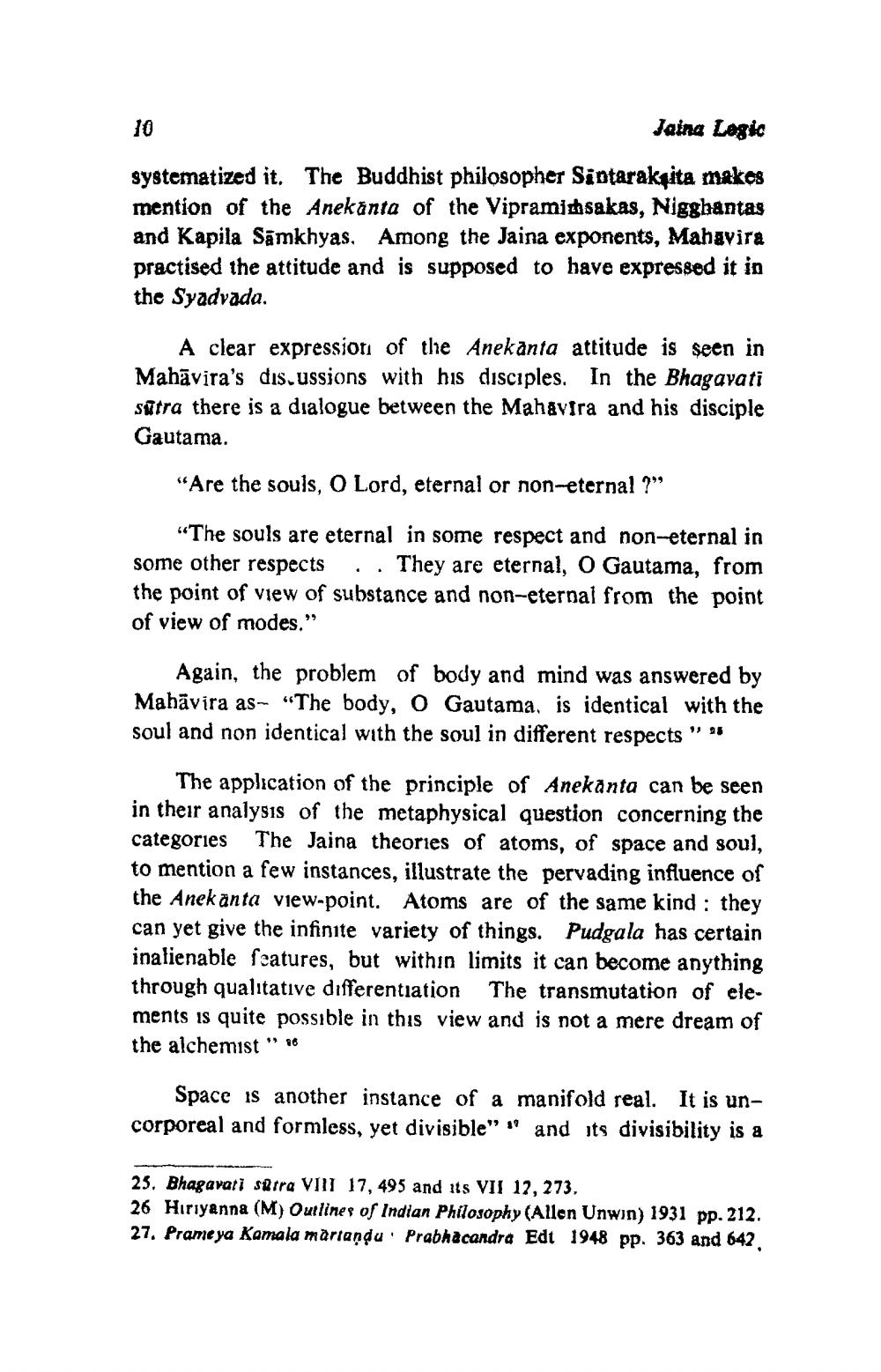________________
Jaina Legic systematized it. The Buddhist philosopher Sintarakita makes mention of the Anekanta of the Vipraminsakas, Nigghantas and Kapila Samkhyas. Among the Jaina exponents, Mahavira practised the attitude and is supposed to have expressed it in the Syadvada.
A clear expression of the Anekanta attitude is seen in Mahāvira's dis ussions with his disciples. In the Bhagavati sätra there is a dialogue between the Mahavfra and his disciple Gautama.
"Are the souls, O Lord, eternal or non-eternal ?"
“The souls are eternal in some respect and non-eternal in some other respects . They are eternal, o Gautama, from the point of view of substance and non-eternal from the point of view of modes."
Again, the problem of body and mind was answered by Mahāvira as "The body, O Gautama, is identical with the soul and non identical with the soul in different respects ” »
The application of the principle of Anekanta can be seen in their analysis of the metaphysical question concerning the categories The Jaina theories of atoms, of space and soul, to mention a few instances, illustrate the pervading influence of the Anekanta view-point. Atoms are of the same kind : they can yet give the infinite variety of things. Pudgala has certain inalienable features, but within limits it can become anything through qualitative differentiation The transmutation of elements is quite possible in this view and is not a mere dream of the alchemist" 16
Space is another instance of a manifold real. It is uncorporeal and formless, yet divisible" "' and its divisibility is a
25. Bhagavati serra VIII 17, 495 and its VII 12, 273. 26 Hiriyanna (M) Outlines of Indian Philosophy (Allen Unwin) 1931 pp. 212. 27. Prameya Kamala martandu Prabhacandra Edt 1948 pp. 363 and 642




